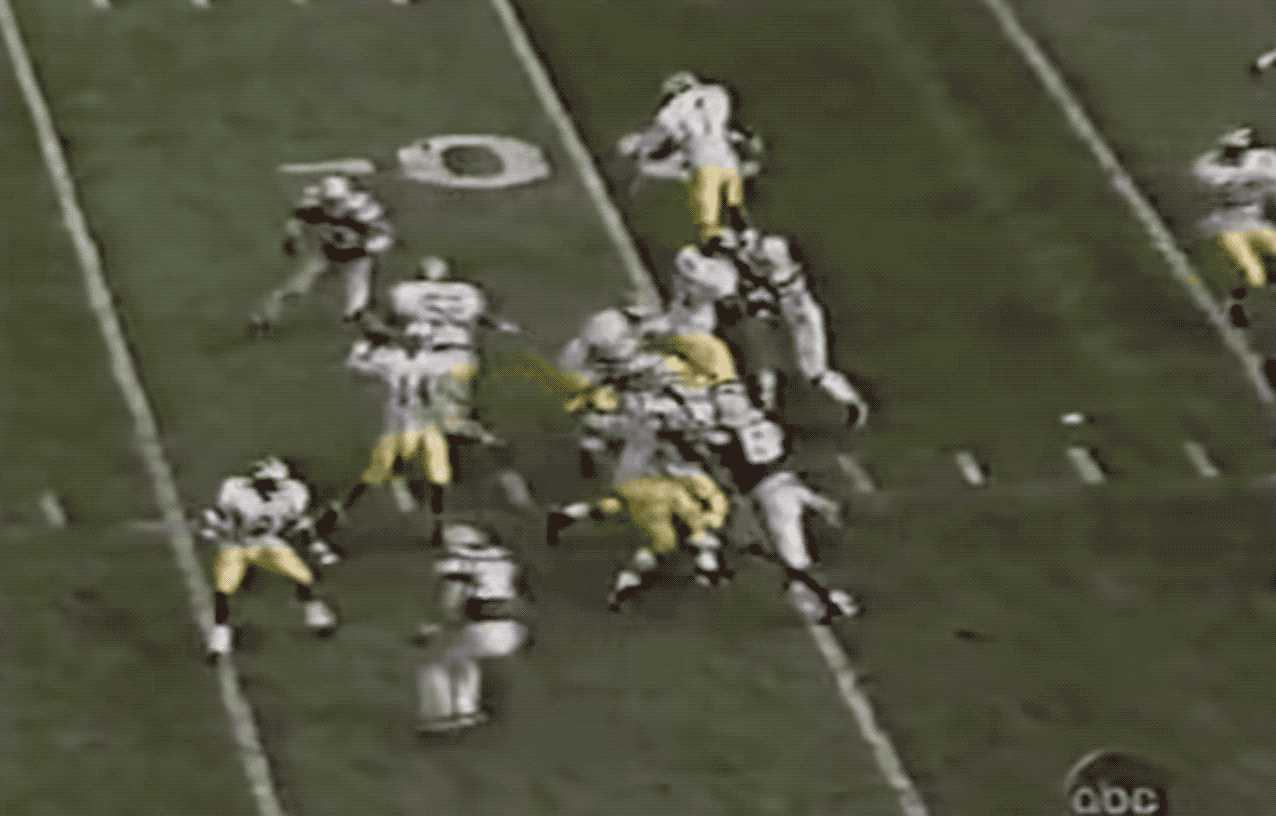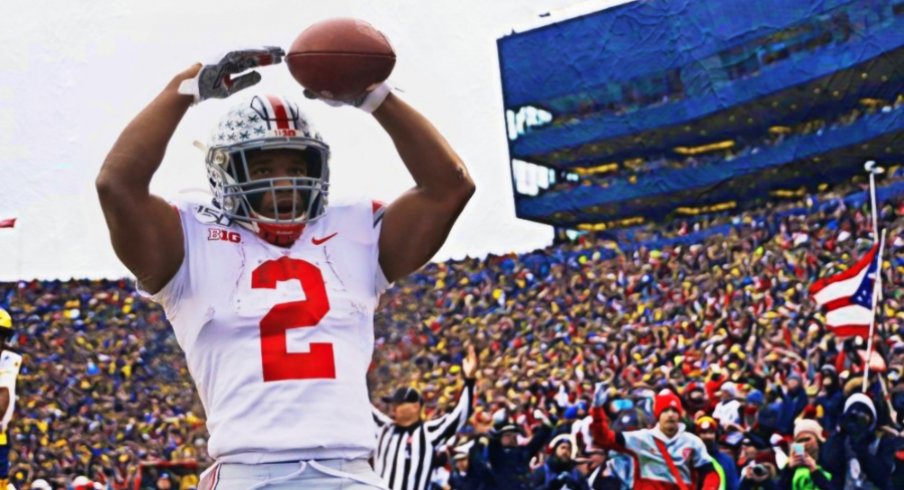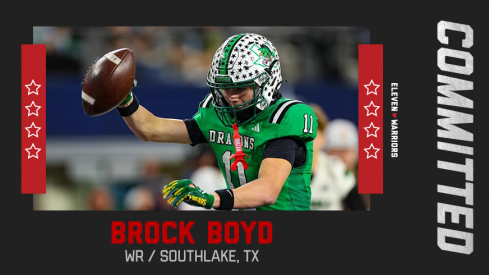Rules and regulations have been altering college football since its inception.
Bear Bryant's 1954 training camp at Texas A&M lasted ten full days in the Texas summer heat and had no water breaks by design. The Junction Boys book romanticizing Bryant's practices was published in 2001, and the movie was filming on the day Korey Stringer died at Minnesota Vikings training camp after running a 108 degree temperature and suffering organ failure.
Figuring out that there's nothing masculine or tough about heat stroke is still a work-in-progress. Jordan McNair has only been dead for a year. He was in diapers when Stringer passed away for the same preventable circumstances that would take his life. There is still no real governance around preventing dehydration and heat stroke; only unfollowed education and lawsuits.
THE 2003 FIESTA BOWL ENDS IN REGULATION without any controversy at all UNDER THE 2019 RULEBOOK.
Nineteen college football players died during the 1905 season alone, which expedited banning the flying wedge (football's greatest play; it is still without peer) and legalizing the forward pass to diffuse some of the carnage. Those rules were bemoaned and cited with ruining the sport, making football as they knew it practically unrecognizable.
But just over 100 years later, football players are no longer dying on the field every weekend. They're now dying in slow-motion from chronic traumatic encephalopathy. Modern players who had transformed themselves into one-man flying wedges have been forced to completely change their attacking behavior or risk immediate game disqualification.
Just ten years ago as the previous decade was closing, what's now cause for ejection was celebrated during football game broadcasts. Short of scoring or causing a turnover, the easiest way to earn media fame and adulation was to commit targeting in the most vicious way possible.
ESPN College Gameday's opening in 2009 was comprised of stacked targeting highlights in rapid succession. The theme song is largely unchanged; everything else is radically different. When this decade closes in 10 years there will be nothing controversial about targeting calls because the behavior behind even the borderline ones will have been fully cleansed from the sport.
Targeting penalties and subsequent ejections would not be possible without the replay review infrastructure that was adopted first by the Big Ten in 2004. The following season, the rest of D-IA (which became the FBS a season after that) began re-examining calls on the field in a booth. College football hasn't stopped looking back since 2005. Replay - and the prospect of replay - now dominates every game.
Replay was the biggest change that college football rules and regulations sustained during the 2000s. A decade later, targeting has transformed how the game is both officiated and played. Both of these changes have had a monumental impact on historic Ohio State postseason games in each decade.
If replay had been standard during the 2002 season (it was used in one game that season as an experiment - Penn State vs. Michigan) the BCS Championship would have ended in regulation, assuming a level of replay booth competence that was absent in the 2019 Fiesta Bowl.
THE 2019 FIESTA BOWL IS WON BY OHIO STATE UNDER THE 2002 RULEBOOK in a game that might not have been competitive.
Craig Krenzel taking two knees in victory formation in the 4th quarter would have replaced Chris Gamble drawing a flag in the first OT. Conversely, if the rules Miami and Ohio State played by had been in effect in 2019, Shawn Wade would not have been ejected, because there is no targeting penalty and no replay to confirm it. A 4th down punt would have replaced Clemson's first touchdown of the game, which came by way of siphoned momentum.
Jordan Fuller's second stolen touchdown of the season would have stood as well, because the call on the field in 2002 was the only call that mattered. The framework of the day is the only framework that counts. Rules and regulations have been altering college football since its inception.
Bad officiating is practically the only constant in all of sports at every level, and not even replay can totally cleanse that reality. Playing well enough to overcome officiating will continue to be a winning strategy as every decade turns, as long as humans stay in charge.
And the 2019 Buckeyes would have literally killed the teams they faced this season had they been allowed to use the flying wedge. Rules and regulations have good intentions. Without them, none of us would have grown up in a world with college football.

Michigan was getting shut out by Ohio State in the 2nd half when a stroke of bad luck put the Wolverines on the board back in 1996.
The Buckeyes still had the lead and the superior team, but they swapped momentum, juice and emotions from that play on. Until that moment it did not look like the visitors were going to score at all. A field goal later gave Michigan the lead. Ohio State, favored by 17 points, did not score again until it faced Arizona State in Pasadena 23 years ago today.
Today, the 1996 Buckeyes are remembered in a continuum of John Cooper heartbreaks as yet another dominant edition that found a way to lose the only game it absolutely has to win. There's no reason Ohio State couldn't have maintained and extended its lead. That play changed everything.
The Buckeyes facing their former backup quarterback in his adopted state would have been aN ADVERTISING AND RATINGS goldmine.
Streets' touchdown is remembered less for the catch and run and more for Shawn Springs, a consensus All American who fell down on the slant. Springs was so good he told Sun Devils' All America WR Keith Poole prior to the Rose Bowl he was going to allow him to have one catch. If you rewatch the game you can spot Springs openly letting him have that one harmless reception. Poole was a non-factor otherwise. And Springs never fell down.
I remembered Springs' slip against Michigan after Shaun Wade's ejection for targeting turned his sack and a Clemson 4th and long punt into a 1st down, the ejection of a vital cog in the Buckeyes' defense - and the Tigers' first points of the evening.
That slip gave the Tigers new life. Buckeye fans were already thinking about New Orleans as Wade was burying Trevor Lawrence, but the teams swapped momentum, juice and emotions from that play on. Fuller's stolen touchdown later compounded the issue and every possible variable that could have helped Ohio State saved Clemson instead.
If just one of ten different opportunities goes the Buckeyes' way, they are spending early January watching LSU game film. Instead, the heartbreak has sent many of us spiraling into finding a motive for bad officiating, a naturally occurring phenomenon in every sport.
Ohio State rates better than ANYYYYYYYYYYYYYYY team in CFB!!!!!!!!
— Kirk Herbstreit (@KirkHerbstreit) December 30, 2019
To think ANY network wouldnt want them is laughable. https://t.co/2UgsIOgIt2
Herbie is correct. The Buckeyes are ratings gold, which is why ESPN exhaustively covers every single bit of bad Ohio State news like it's a royal wedding. Meanwhile, Clemson had an assistant coach caught on an FBI wiretap explaining to Zion Williamson how they take care of recruits in football and basketball. The program has a pervasive ostarine problem as well.
You don't hear about these things not because ESPN or anyone else is trying to bury it; it's just that nobody gives a solitary shit about Clemson. You don't see B1G-friendly Fox digging any of this up either. These outlets are focused on making money - and Clemson is nobody's gravy train outside of South Carolina.
ESPN - and media companies in general - are not news businesses or even entertainment organizations. They are vehicles for justifying premium advertising rates and sponsorships, which comes through measured viewers and clicks. Clemson delivers a fraction of the eyes and clicks Ohio State does. The Buckeyes facing their former backup quarterback in his adopted state would have been a goldmine.
The 2019 Buckeyes deserve to be remembered for more than one officiating and replay crew in Glendale that gargled its own diarrhea in a big moment. History will eventually fit this season into a continuum that transitions eras from Urban Meyer into Ryan Day. Right now, the Fiesta Bowl is an exposed wound. It will never sting more than it does right now.
Six years ago Buckeye fans were mourning a missed title opportunity behind the formidable Braxton Miller-Carlos Hyde power spread attack, which was ultimately felled by Ohio State's inability to put Wisconsin away more quickly. This created a hole in the Death Star the program inadequately filled with Pitt Brown, which was exploited and exploded by both Sparty and Clemson.
Hyde, who would have been in New York City that December had he not been suspended for three games, was gone. Corey Linsley, Jack Mewhort and Andrew Norwell were all out of eligibility en route to being multi-millionaires. Noah Spence, Ryan Shazier and Bradley Roby would not return. Miller, as it turned out, had played his final snap as quarterback. The 2014 team would be practically unrecognizable.
A generational team that had won 24 straight games collapsed, and a window appeared to be closed. It only took a year for that sting to subside, because Ohio State football is a tree that has been growing far longer than we've been around to enjoy it. The dark ring created by the 2013 season had the good fortune of being pushed out by its successor.
The 2019 Buckeyes followed a mostly joyless 2018 campaign that perfectly captured the entitlement that's issued to every Ohio State fan, where even just winning isn't enough. Another window has closed on what was a championship-level edition in every aspect except the one the matters.
It required a cadence of worst-case scenarios to deny it the shot to be remembered by another banner in the north end zone. Ironically, the best-case scenario for the outgoing Buckeyes would be matching the 2013 team's fate.
So here's to the 2019 Ohio State Buckeyes. Thank you for the ring.



